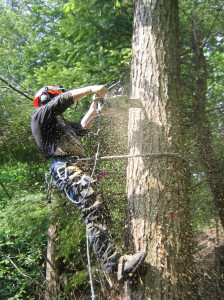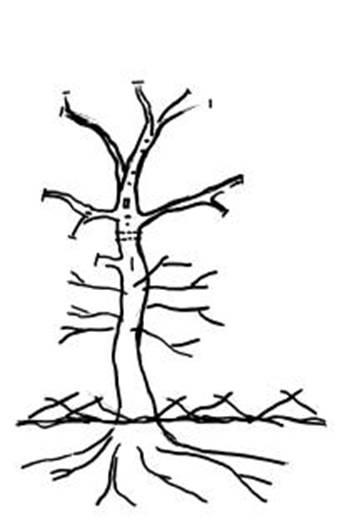 |
Creating standing decaying tree trunk showing features that mimic nature
|
How can the tree-surgeon contribute to forest health?
I am a tree surgeon working at Coed Nant Gain where I have discovered a role in maintaining forest health.
I climb trees and take off the large limbs and sometimes the whole crown of the tree. I cut the branches to mimic nature as if ripped-off by a gale. This punches holes in the forest canopy and lets light in creating glades. The rest of the tree is left because standing timber is required for forest health.
This is the principal reason why a tree surgeon is working in these woods and not the usual lumberjack. This is skilled work for which tree surgeons have the essential training, expertise and equipment.
There are various techniques that I use:-
* The tree chosen is usually one already weakened by trauma or disease or old age or simply by being in the wrong place.
* After topping the tree, I ring bark it at about three metres or so down from the top so that the top dies but no the main trunk.
* I make small cavities just above the ring barking to make nest sites and encourage decay.
* I cut five or six vertical slots down the trunk a couple of metres apart for insects and bats and so on.
* Some tree species, both broadleaf and conifer, send out lateral shoots called epicormics. These make excellent nest sites for song birds and roosting sites especially for larger birds such as owls.
These procedures help to hasten the tree’s slow demise over decades rather than years by cutting off nutrients and allowing fungal spores to enter the heartwood. The tree becomes a decaying tower home to numerous insects, grubs and wood boring beetles, providing a larder for woodpeckers.
The tree is now a vital part of the forest that is contributing to community’s health and my work is done for the time being.
Tree Surgeon
|





